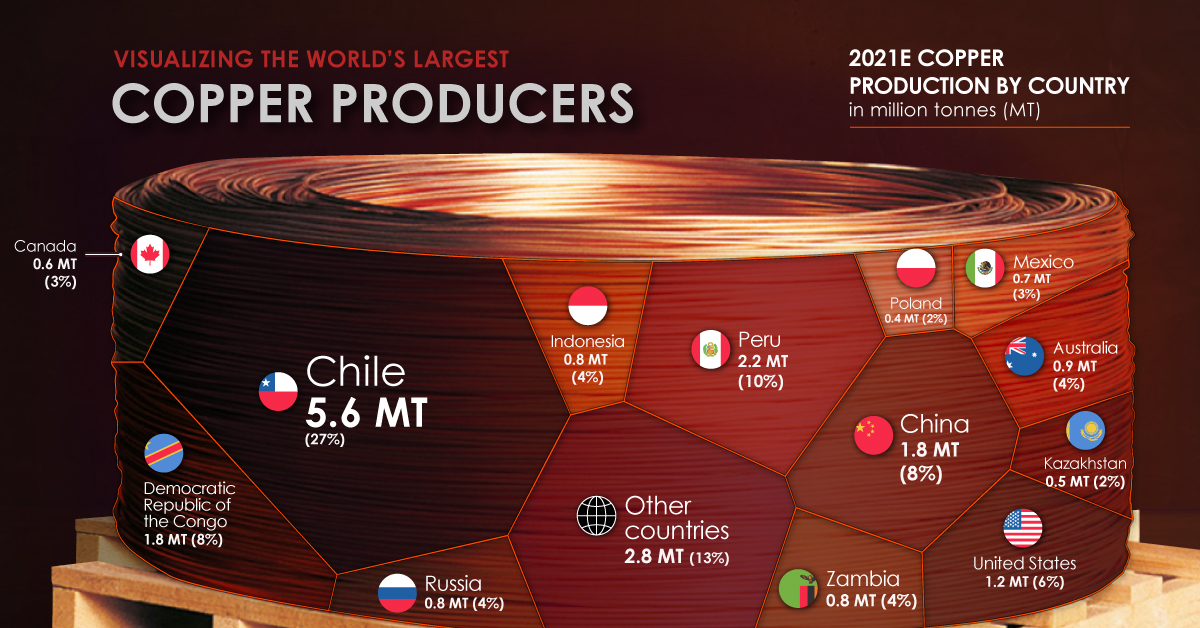Solar use is growing at exponential rates, and countries like the U.K., France, and India are planning to ban gas-powered vehicles in the coming years. Even the world’s largest auto market in China is under duress from mounting pollution, and the country has ambitious plans to build up world-class renewable capacity while ditching gas-powered vehicles.
The Energy Storage Question
As the world shifts to renewables, one question remains up in the air: how will we store all this energy? Today’s infographic comes to us from VanadiumCorp and it highlights vanadium redox flow batteries (VRFBs) – which are a breakthrough that some experts say may be the future of grid-scale energy storage.
Vanadium redox flow batteries (VRFBs) are fairly unique in the battery world. They work by taking advantage of the natural properties of vanadium, a metal with four different oxidation states. But rather than using the metal in a solid state, vanadium electrolyte (a liquid solution) is used for both half-cells and the configuration is divided by a proton exchange membrane. Typically, massive tanks filled with vanadium electrolyte are connected, pumping the solution through at high volumes to charge or discharge.
The Benefits of VRFBs
This unique setup gives VRFBs a few interesting advantages for something like grid-scale energy storage:
Extremely scalable Can rapidly release large amounts of energy Vanadium electrolyte is reusable, recyclable, and has a battery lifespan of 25+ years No cross-contamination of metals, since only one metal (vanadium) is used Cycle life is theoretically unlimited Can maintain ready state for long periods of time Can be charged and discharged at same time Non-flammable
As a result, VRFBs can be used in a variety of energy storage applications such as peak-shaving, load leveling, microgrids, wind and solar, off-grid power supplies, and uninterruptible power supplies.
Vanadium Outlook
VRFBs are getting more attention from utilities companies, and large battery projects have already been announced. The most notable vanadium-flow battery is probably a 200 MW system being built on the Dalian peninsula in China, which will serve 7 million residents. Costing $500 million, it’ll be used to peak-shave approximately 8% of Dalian’s expected load by 2020. This battery system will be the world’s largest, and it will single-handedly triple China’s grid-connected battery storage capacity. According to Chinese firm Azure International, the market projection for VRFB demand (by MW) in the top 10 countries is growing at an 80% CAGR from 2013 to 2020, ultimately culminating in more than 7,000 MW of vanadium-flow capacity needed in 2020. This demand could be even more substantial than that if the price of vanadium electrolyte could be reduced – it makes up about 30-50% of the cost of each battery alone.
on Man has relied on copper since prehistoric times. It is a major industrial metal with many applications due to its high ductility, malleability, and electrical conductivity. Many new technologies critical to fighting climate change, like solar panels and wind turbines, rely on the red metal. But where does the copper we use come from? Using the U.S. Geological Survey’s data, the above infographic lists the world’s largest copper producing countries in 2021.
The Countries Producing the World’s Copper
Many everyday products depend on minerals, including mobile phones, laptops, homes, and automobiles. Incredibly, every American requires 12 pounds of copper each year to maintain their standard of living. North, South, and Central America dominate copper production, as these regions collectively host 15 of the 20 largest copper mines. Chile is the top copper producer in the world, with 27% of global copper production. In addition, the country is home to the two largest mines in the world, Escondida and Collahuasi. Chile is followed by another South American country, Peru, responsible for 10% of global production. The Democratic Republic of Congo (DRC) and China share third place, with 8% of global production each. Along with being a top producer, China also consumes 54% of the world’s refined copper.
Copper’s Role in the Green Economy
Technologies critical to the energy transition, such as EVs, batteries, solar panels, and wind turbines require much more copper than conventional fossil fuel based counterparts. For example, copper usage in EVs is up to four times more than in conventional cars. According to the Copper Alliance, renewable energy systems can require up to 12x more copper compared to traditional energy systems. With these technologies’ rapid and large-scale deployment, copper demand from the energy transition is expected to increase by nearly 600% by 2030. As the transition to renewable energy and electrification speeds up, so will the pressure for more copper mines to come online.













